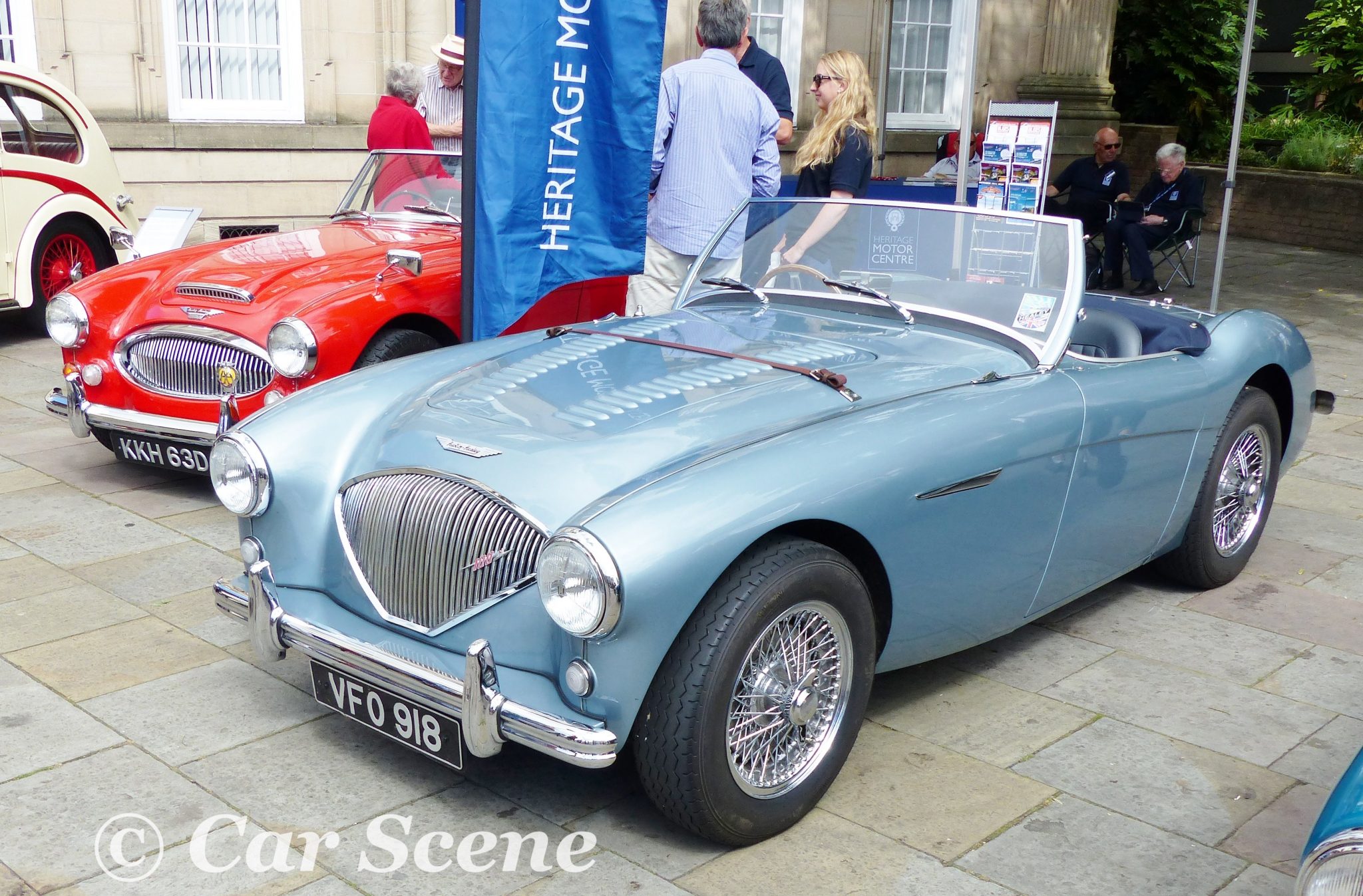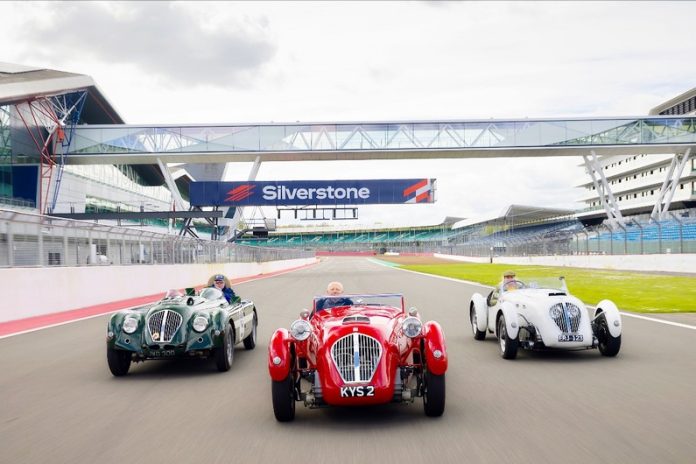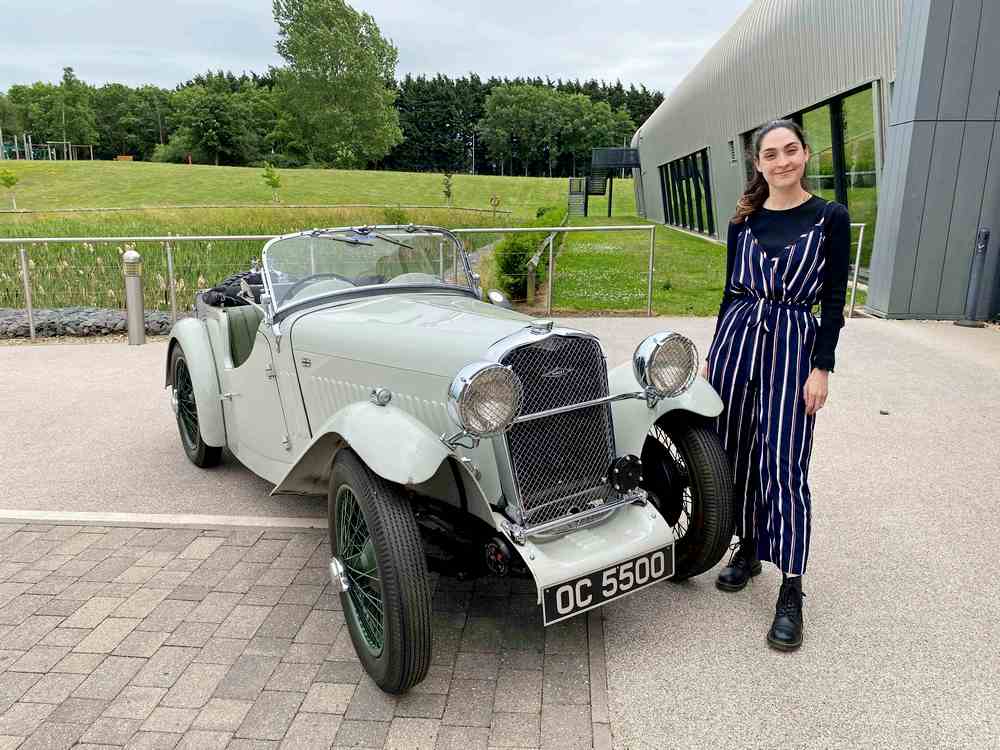The bulk of this article was originally written in March 2013 for my blog at that time titled ‘twincam-serendipity.blogspot.com’. In 2016, I upgraded my blog to a wordpress based website and changed its name to ‘carsceneinternational.com’.
In addition to adding a number of recent posts to the new site I revised some important, to me, old blog posts in order to update them and make them compatible with my new website. As a result of speaking with some members of staff of the Warwickshire County Records Office, in connection with the Healey Motor Company Archive, I have updated this article and linked it with the exciting activities and opportunities that the ‘Archive’ presents to Healey enthusiasts.
As I write this, the planned launch date of the Healey Motor Company Archive, at the Warwick County Records Office, is during the fourth week of May 2017. When a definite date is known I will post it here.
My first contact with the WCRO was in the summer of 2015 when it launched its Healey Motor Company Archive funding appeal at the Retro Warwick Classic Car event.
I will start with a revamp of the original article written in march 2013 which at that time had the title ‘The Healey 100, its derivatives and the Healey Museum NL.’ –
At this stage I want to clarify, as best I can, the relationship between Healey and Jensen both in regards to the original Healey 100 and the later Jensen – Healey.
The story of how the Healey 100 became the ‘Austin’ Healey and how Jensen came to assemble the trimmed bodies/chassis unit is told later in this article. I will start with the –
Jensen – Healey
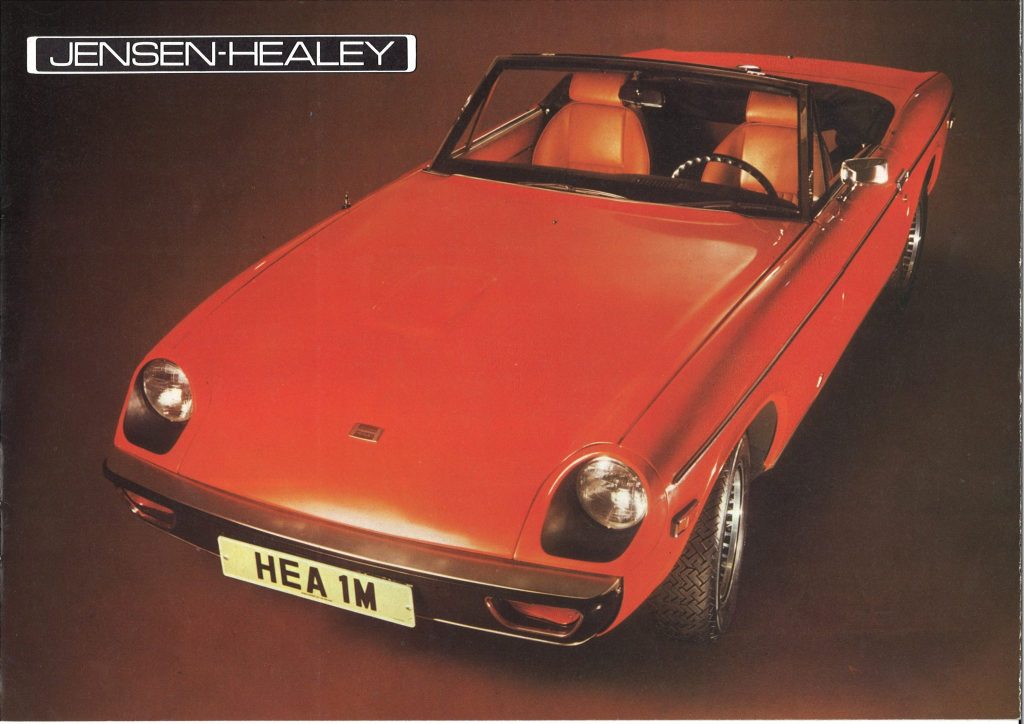
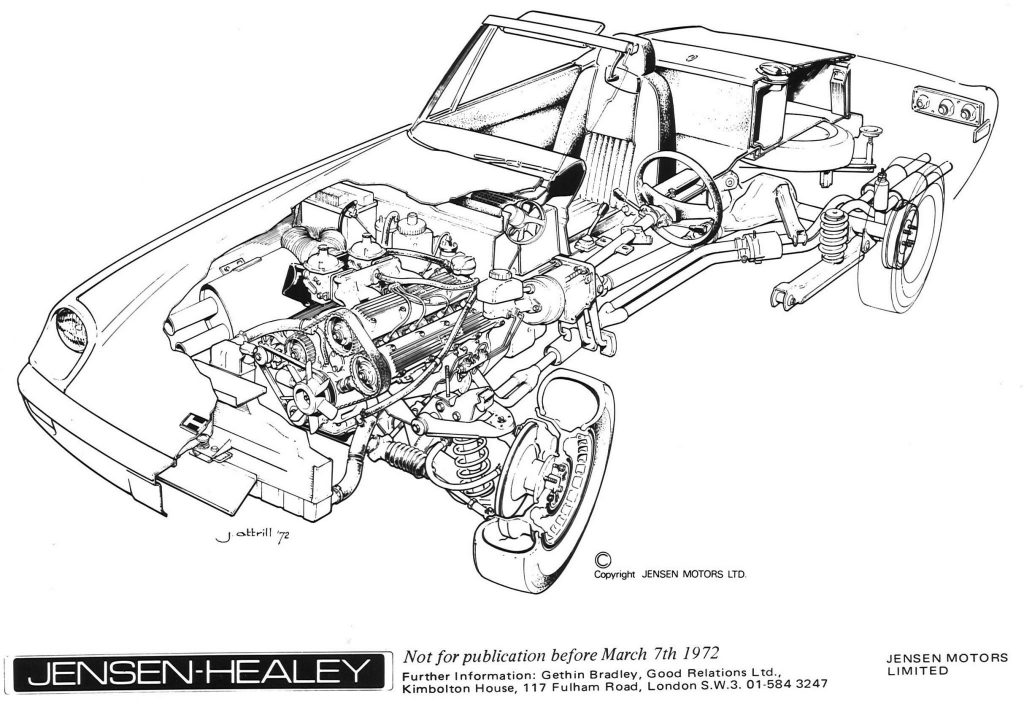
Let me say, first of all, that the following is not intended to be a “blow by blow” report on every aspect of the Healey Jensen relationship and the cars emanating from it. It is merely an overview which hopefully will inspire the reader to do his or her own research on this rich chapter of the British Motor industry.
The ‘Big’ Healey (100 BN1 > 3000 BJ8) ceased production in 1967 because sales to the USA, in particular, had declined and the difficulties encountered in meeting the increasingly stringent U.S. safety and anti-pollution regulations on a basically outdated design.
This presented a dilemma to the Healey Motor Company, Jensen Motors and Kjell Qvale the major importer of Austin Healeys to California.
The three parties put their heads together and came up with the Jensen – Healey sports car. Kjell Qvale became a major shareholder in Jensen Motors and appointed Donald Healey Chairman. Donald’s right hand man, his son Geoffrey, played a major part in designing the Jensen-Healey with the help of William Towns the eminent British car stylist.
The car was launched in 1972 and made at Jensen’s Kelvin Way, West Bromwich, factory where the iconic Jensen Interceptor was also made and where the Austin Healey 100 > 3000 trimmed body/chassis units had also been assembled since 1956 (from 1952 to 1956 they had been assembled at Jensen’s Carters Green factory).
From this distance, it could be concluded that Leonard Lord, C.E.O of Austin Motor Company at the time, had been opportunistic in buying Healey’s 100 sportscar and applying the Austin badge to it. That is what great businessmen do! However, Austin, soon to become, BMC, via an amalgamation with Morris Motors, was not for nothing the U.K.’s and Europe’s biggest car producer at the time. It had clout and knew how things worked on a large scale. These were the very attributes that Jensen Motor Company Ltd. did not have when it came to engineering, production, marketing and selling the Jensen – Healey.
JMC’s management structure just wasn’t up to the task; like other British car manufacturers at the time it had to contend with other problems such as a faltering economy and fractious industrial relations. And worse of all it had elected to use an untried engine (the 907 2.0 Ltr. twin camshaft, sixteen valves, four cylinders) from Lotus. It looked great on paper and would eventually become recognised as a very good engine, the mainstay of some desirable Lotus cars (Talbot won the World Rally Championship, in 1981, with its Sunbeam Lotus fitted with a derivative of this engine). However, in its initial state with all its un-reliability problems, it all but destroyed the Jensen – Healey’s reputation right from the start. Much has been written on this subject and can be found on the internet.
Healey 100
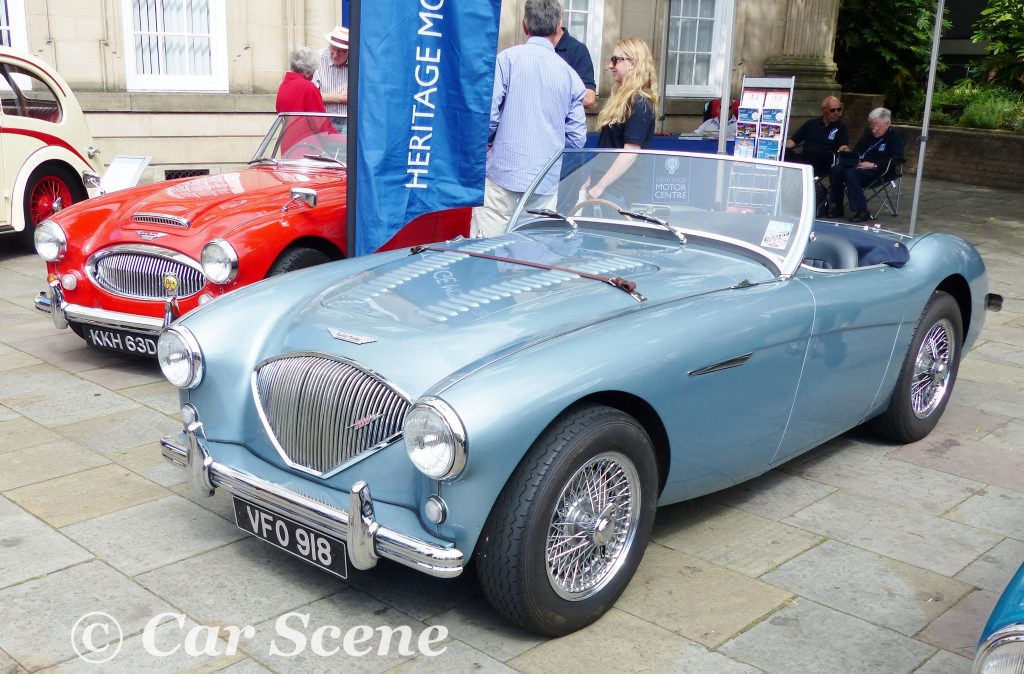
In February/ March 2013 there was a television programme shown on ITV, in the U,K, on Monday evenings. It was called ‘Cornwall with Caroline Quintin’, Caroline is an actress who grew up in Cornwall.
The programme could be described as a ‘Travelogue’. One of the interesting aspects of the programme, that is relevant to this article, is that members of the Healey family who are apple growers and cider makes featured throughout.
The name Healey is not uncommon and I certainly did not think of Donald Healey or Healey cars when the family were introduced. That is until later in the series when it was revealed the head of the cider making family was a grandson of the great man himself, Donald Healey.
During that particular episode full coverage was given to this family connection with the founder of the Healey Motor Company. The major reason for this is because this episode was largely based upon Donald’s former home and gardens at Trebah. The male members of the (cider) family were shown driving two ‘Big Healeys’ and a Sprite, all three in immaculate condition. All this stimulated my interest and in undertaking internet based research on the beautiful house and gardens at Trebah and their connections with Donald Healey I came across a reference to a ‘Healey Museum’. I naturally assumed that this museum would be in the U.K., I was pretty sure that it wasn’t around Coventry or Warwick because that is where I live and I would have heard of it. Perhaps it was near Trebah, Cornwall? Further research revealed that the Healey Museum had been opened in October 2012 in Vreeland, 11miles to the south of Amsterdam, The Netherlands.
Wow! that came as a surprise. The U.K., of course, the U.S.A. where most Austin Healey 100s were sold, very logical but the Netherlands???
The Healey Museum NL. intro.
The answer lies in just two words ‘enthusiasm’ and ‘commitment’. Hans van der Kerkhof, whose love child the Healey Museum was, had and has both those attributes in abundance. He is to be admired and thanked by all Healey, Austin Healey and Jensen Healey enthusiasts for having the vision to establish such a wonderful venue for all things ‘Healey’. The question of why ‘The Netherlands’? will never totally go away but it certainly will not be front of mind if you actually find yourself in the Museum itself.
Having discovered the Healey Museum website I perused it avidly.
My first job in the late 1950s was as a trainee draughtsman at Jensen Motors, West Bromwich, U.K. My first assignments were to work on the Volvo P1800 and the Jensen Tempo Van. Jensen had been contracted by Volvo to assemble the P1800 at its Kelvin Way factory where the Austin Healey body/chassis units were also assembled. Although I did not personally work on the Healey 100 the vertical layout drafting board was one of two that dominated Jensen’s Carter’s Green body drawing office and saw most activity in that office. I remember seeing Geoff Healey, Donald’s son and director of engineering for the Healey Motor Company, with his distinctive ‘handle bar moustache’, when he visited the office to talk about design modifications with Jensen’s chief engineer, Eric Neale.
With my first hand knowledge of the close relationship that existed between Healey and Jensen, regarding the continuous development of the Healey 100, I was a little disappointed not find any reference to Jensen’s role on the Healey Museum website.
Leonard Lord and Donald Healey
The story of how Jensen obtained the contract to build the the Austin Healey bodies is one of the legends of the British Motor industry. There are two versions of that story, the romantic one goes like this: Leonard Lord, the CEO of Austin at the time, had asked Jensen to design a sports car as a follow up to the A40 Sports (a scaled down version of the 1950 Jensen Interceptor, designed by Eric Neale) which they were already supplying to Austin under contract. But Leonard Lord saw the Healey 100, designed by Healey employee, Gerry Coker, at the 1952 London Motor Show and decided to place the design contract with the Healey Motor Company.
The more practical one is broadly similar but has Leonard Lord setting up a completion between Healey, Jensen and Frazer Nash to design a sports car for Austin. The first time Mr. Lord saw the Healey 100 was at the London Motor Show in 1952 but it wasn’t by chance. Jensen had not been able to produce its design in time and there is little knowledge of Frazer Nash’s design or if they even presented one. The Frazer Nash Mille Miglia (photo shown below) was produced at about the same time and could easily have been presented by them. The exact details of this story are lost in the mist of time (or is to be found deep in the Austin Motor Company’s archives by a committed researcher) but suffice to say Healey was awarded the contract to supply the Healey 100 to Austin and would be badged as an Austin Healey 100.
The other contenders for the Austin Sports Car Contract –
Jensen –
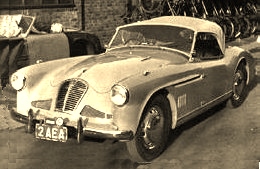

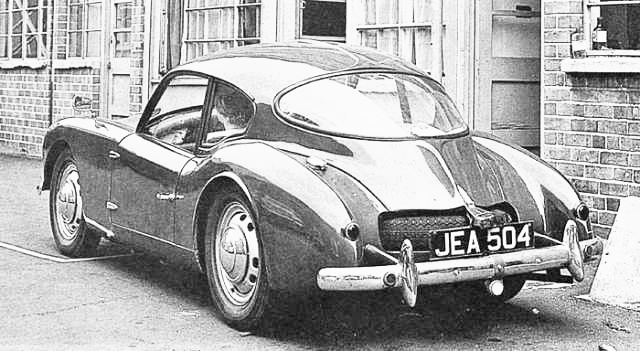
Frazer Nash –
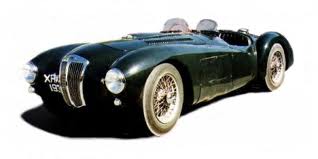
Originally Tickfords, the well established British coachbuilder, was going to build the production bodies for the Healey 100 but the car had created such an impact that it was soon realised that Tickfords facilities could not cope with the demand. So the contract was given to Jensen who would have been lobbying for it in any case.
The separate chassis frame was supplied by John Thompson Ltd of Wolverhampton and delivered initially to Jensen’s Carter’s Green factory and from 1955 onwards to the Kelvin Way factory. Jensen pressed and assembled the body parts. These where assembled into complete bodies which were painted, trimmed and mounted on to the chassis frame before being transported by road, initially to Austin’s Longbridge works and from late 1957 to the MG factory in Abingdon, Oxfordshire. At these locations all mechanical and final trim components were fitted before shipment to dealers, the majority being in the United States
Healey Museum NL. contd.
I sent an email to the Healey Museum informing them of my interest, my background and also raising the issue of the fact that the Jensen connection with the Healey 100 was not referred to on their website.
I received a very courteous reply from the Secretary of the Foundation which operates the museum. He pointed out that the main purpose and focus of the Museum is to celebrate Donald Mitchell Healey, the engineer and entrepreneur; the exhibits, particularly the cars, represent tangible evidence of the great man’s achievements.
Although the secretary did not say so in so many words I interpreted his response as saying that a reference to Jensen’s role in the development and production of the Healey 100 would diminish the museum’s focus on Donald.
It is a very subtle point of view and one which, of course, I respect. The Secretary did say that as the Museum develops, it only opened in October 2012, then connections and contributions such as Jensen’s may well be featured in future.
One of the great and unique strengths of this Museum is its collection of drawings and documents associated with DMH and his creations. I would assume that, as far as the Healey 100 is concerned, many of these documents would refer to Jensen and some (many?) would originate from Jensen’s Drawing Office and therefore carry the Jensen logo. One day I will visit and find out for myself. *
* I did visit the Museum in April 2015 and was indeed shown drawings on Jensen logoed paper.
After this exchange with the museum I re-examined my ‘gut reaction’ to there not being reference to Jensen’s role in the development and production of the Healey 100 and its derivatives, on the museum’s website. Was I being too precious and unrealistic in my reaction? After all, many famous cars had significant contributions made to them by suppliers, particularly in the area of body assembly, without those suppliers being generally recognised by subsequent enthusiasts of the marque.
I could easily have concluded that, yes, I was being too precious and moved on.
As I have indicated earlier in this piece, the basis of my reaction lies in the fact that I worked in the Jensen drawing office during the years 1958 to 1961, inclusive. The Healey 100 had dominated the drawing office. That had been the case long before I joined the firm. The full size, vertical, drawing board, with the Healey 100 on it, was a permanent and dominant feature of that office. Not only were draughtsmen working on it but meetings, often led by Eric Neale, Jensen’s Chief Engineer, were held around it. Occasionally Geoff Healey would also be in attendance.
Jensen’s staff were doing far more than just ‘productionising’ this vehicle’s body, they were contributing to its design. This process increased in the middle and latter years of the car’s production life.
Although I say that the Healey 100 dominated the drawing office it wasn’t the only product being worked on. I have already mentioned that I worked on the Volvo P1800 project, others worked on the Tempo van and of course, the Jensen 541S.
I contend that this ‘design’ activity distinguished Jensen from being just a mere supplier to the Healey/Austin partnership. In my view this level of involvement makes Jensen worthy of greater recognition whenever the subject of the Healey 100 is being focused on, as in the case of the Healey Museum NL, for instance.
Financially, the Austin Healey contract was very important to Jensen. It enabled it to invest money into developing its own range of cars.
Tom Kileen
At Jensen I came across a freelance designer called Tom Kileen. He was a very solitary person I don’t know what his connection with Jensen was other than that he had his own office near the main gate of the Carters Green plant. Certainly nothing he did while I was at Jensen had any impact on any of the Jensen products, either own brand or contracts. One project I do remember him working on was ‘pop – up’ headlights for the MK1 ‘Frog eye’ Sprite. This was on his own account it certainly wasn’t for Jensen, I don’t know if Healey was involved in any way. I wasn’t aware of this design going into production even with ‘Converters’.
In recent years I did some research on Tom Kileen and found out that he was one of the first people to introduce ‘Monocoque’ body construction for racing cars. As a result of working on this post I have come across an ‘e’ book dedicated to the man, written by R(Rob) J Allan. It is an excellent and well researched document which would be of interest to anyone who is generally interested in the engineering/experimental aspect of motor cars and racing cars in particular.
The Healey Motor Company Archive* held by The Warwickshire County Records Office
As I said at the beginning of this revised article I have had recent contact with the Warwickshire County Records Office with regards to the ‘Archive’*. After nearly a year of its archivists sifting through twenty boxes of material they are now in a position to start publicising the Archive and making it available to all interested parties. They also aim to use it as an inspiration to local youngsters to consider becoming industrial designers (including car design of course!) themselves. What a fantastic resource.
* To follow WCRO’s progress on bring the HMC Archive to the public visit this link –
http://heritage.warwickshire.gov.uk/category/warwick-healey-motor-company/

